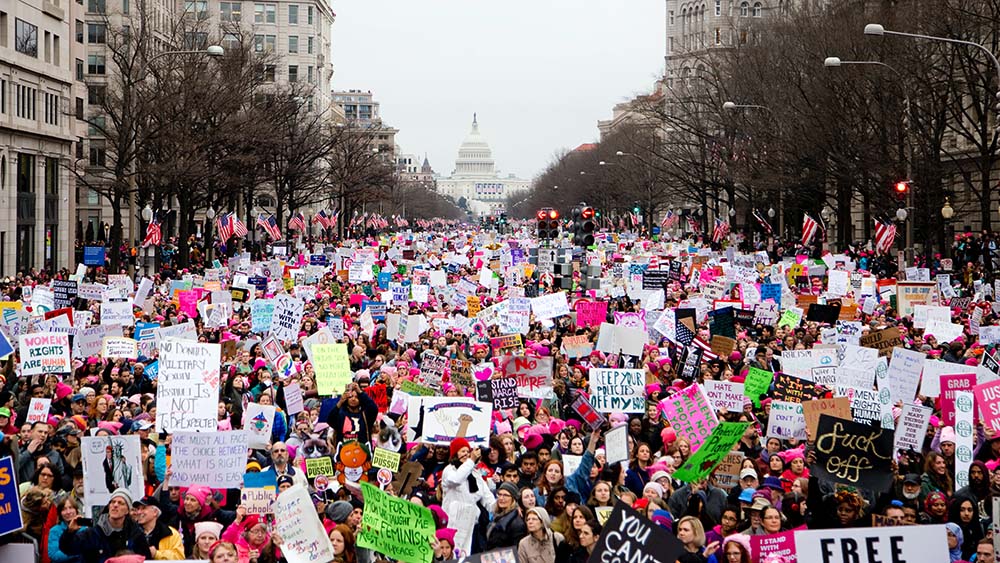
Participants in the Women’s March on Washington walk down Pennsylvania Avenue in the nation’s capital on January 21, 2017. An estimated 5 million people joined other women’s marches around the world the same day. (Photo by Vlad Tchompalov on Unsplash)
Throughout the course of history, conventions and other kinds of gatherings have played an integral role in the fight for gender equity. Here’s a brief timeline of historic events.
July 19-20, 1848 — Seneca Falls Convention
The first-ever convention dedicated to woman’s rights in the United States, the gathering in upstate New York is considered “to be the event that triggered and solidified the women’s rights movement in America,” according to Biography.com.
March 19, 1911 — The First International Women’s Day
Austria, Denmark, Germany, and Switzerland inaugurated the first International Women’s Day in 1911 after Clara Zetkin, a women’s rights activist, suggested the idea at the International Conference of Working Women in Copenhagen held the year prior, according to the BBC. Why March 8? There was actually no fixed date until 1917, when Russian women went on strike on March 8 during WWI, which eventually gained them the right to vote.
December 10, 1948 — The United Nations General Assembly
The UN General Assembly adopted the Universal Declaration of Human Rights in Paris. It was the first international document to assert “the dignity and worth of the human person and [the] equal rights of men and women,” according to the Council on Foreign Relations.
September 4-5, 1995 — Fourth World Conference on Women
The Fourth World Conference on Women in Beijing, China was significant in that all 189 countries unanimously adopted the Beijing Declaration and Platform for Action, which “set strategic objectives and actions for the advancement of women and the achievement of gender equality,” according to the UN. The adoption marks the successful culmination of a series of four conferences held over 25 years, starting with the First World Conference on Women held in Mexico City in June 1975.
January 21, 2017 — The Women’s March
The main event in Washington, D.C. is estimated to have been the largest protest in U.S. history, but its reach went far beyond the capital, with sister marches in more than 550 cities across the U.S. and more than 100 cities around the world.
The work of gender equality advocates still isn’t done. Global gatherings hosted by organizations like UN Women and Women Deliver along with the daily work of women’s right advocates everywhere continue to push the conversation forward.
Jennifer N. Dienst is managing editor at Convene.
More From Convene on Gender Parity
- Backlash to All-Women Speaker Lineup at Science Conference
- Bizzabo Finds ‘Pretty Big Discrepancy’ in Speaker Diversity
- Manels, the Gender Avenger is Coming After You
- All-Male Speaker Line-Up Derails History Conference
- Is the All-Male Panel on the Endangered Species List?
- How to Add More Women Speakers to Your Meetings
- How Can We Create Workplaces and Events Where Diversity Thrives?
- How — and Why — You Should Break out of Your Bubble
